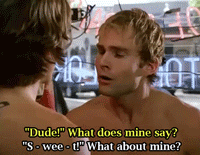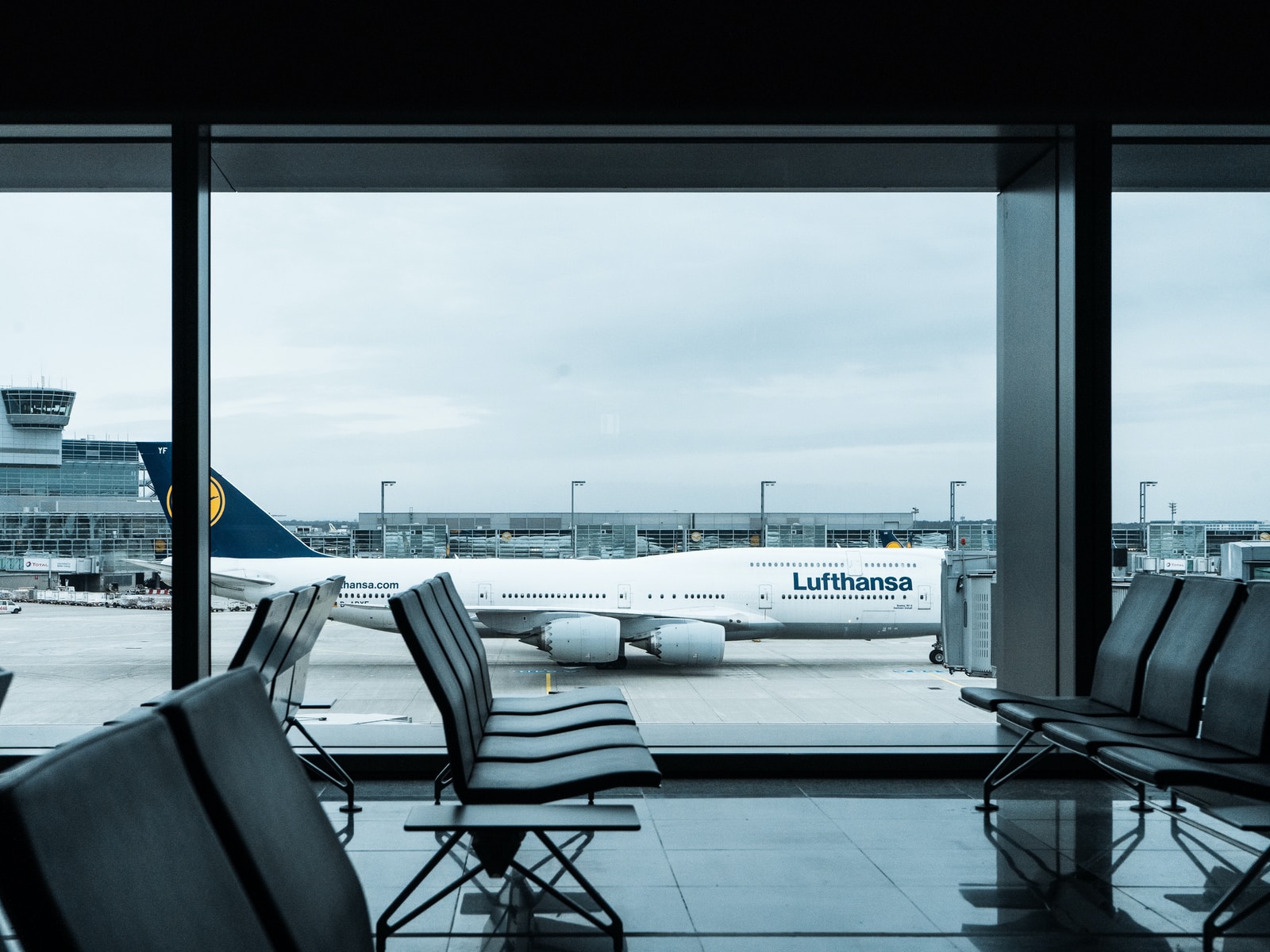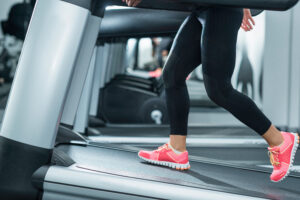If you don’t have a solid hold on how to navigate the confusing world of international travel after COVID, buckle-up. Reading this article will prevent confused frustration and screaming matches like this:

And the frustrating thing is, all the information is out there, but it’s buried in a bunch of different places. I resolved to gather every action, resource, tip and trap into ONE single place, for you my fellow fitprofessionals. Travel was a huge part of our careers and lives, and we will be going places soon again (and working out in them). So here you hvae it – a lawyer’s guide to international travel during COVID.*
Links you need to bookmark ASAP
- Join Sherpa site -destination-based COVID guidance
- Take home COVID tests for returning to US
- What to do if you test positive while traveling
- Renewing your passport – state department guidance
- Global entry and TSA application / renewal
- CLEAR website (for faster airline travel)
- Verifly app and info
- Approved COVID testing partners for American Airlines, United Airlines, Delta, and Southwest

The ‘new normal’ of travel after COVID
Post COVID, the rules of the road have changed, and this is the guide you will want handy especially if you will soon resume international travel for work or pleasure. Note when I say ‘post COVID’ I am not implying the pandemic is over. I am only implying that after 2020, the rules and regulations of travels have changed. According to most analysts, it likely will continue for the foreseeable future. Whether you were a frequent flyer like I was or wanting to start an international adventure, travel as we knew it will never be the same. Everything I found about what to do and where to go for my last international trip was all over the place on the internet, so I decided everyone should benefit from my neurotic research and give you a one stop shop for all the 411.
This article is organized as follows:
1) 10 things to do before your next international trip
2) Best resources for up-to-date travel restrictions
3) Additional guidance / observations on the state of play

Before you plan your travel
You really need to have all your ducks in a row well ahead of your travel, as I have recently learned. There are testing requirements within certain time windows, complicated online entry forms, and proof of vaccinations required for both the departing and returning trip. And the rules will likely change while you are on your journey, so you have to be vigilant prepared with a plan B and C for the unexpected. The airlines communicate some info, but it’s mostly self-help, so it’s on you to make sure that you comply with all of the requirements.
The time you invest in being prepared and organized will be well worth it, because you are dealing with the following key circumstances completely out of your control: 1) bogged down airline bureaucracies that are short-staffed and don’t yet have the bandwidth or technology to process the extra paperwork efficiently; 2) unprepared travelers creating travel nightmares by slowing down lines with improper or incomplete documentation; 3) Language barriers that further complicate #1 and #2.
Here are the top 10 to-dos I recommend to make sure you are all squared away when you resume international travel.

- First of all, CHECK. WHEN.YOUR. PASSPORT.EXPIRES. You may be like, duh, but I have a friend who had to cancel a trip to the DR because she had fallen so out of the travel loop. Many of our passports have been growing mold during lockdown so you will want to immediately check if the expiration date is coming up within a year. This is especially because many countries will not permit entry unless you have AT LEAST 6 months remaining on your passport expiration date. As many of us are aware, renewing your passport is a lengthy cumbersome process that may require you being held hostage in US borders for months, unless you can get approval for a life-or-death emergency, or in more limited circumstances, urgent travel within 72 hours. So get on it NOW if you have less than a year left. You can either go through a live acceptance facility or apply by mail to receive your passport within 18 weeks for routine processing time, or you can shell around an extra sixty bucks to get it in approximately 12 weeks. Per the US State Department website, you can check your status on its online processing center, which gives you a tracking number and ability to check status (as a lawyer, I love having multiple sources of confirmation and reassurance, so big plus from where I sit).
- Check the expiration date of your TSA and global entry status. Your trusted traveler status needs to be renewed every 5 years (by the time of your birthday in the 5th year). Go to https://ttp.dhs.gov) to complete the online renewal or initial application process, which is fairly straightforward. You should also check your status with the biometric recognition CLEAR program, which is recognized at over 50 different airports, including major international hubs. It basically is an even faster way to get through security than TSA, letting you cut in line without having to show your ID, even (but do be prepared for the sneering “who does she think she is” glares as the pre-check line is stopped so you can be hustled to the front). While travel has decreased, the tangled web of COVID-related requirements is causing significant delays in getting through the check-in process, so you will need all the extra time you can get. CLEAR is affordable and also offers family plans as well as free guest passes. You may as well get used to biometrics, because that’s now how airlines are boarding passengers onto planes and through other transport systems like the subway.
- Check travel restrictions for entry/access of the destination country, and note the trending of their COVID cases and vaccinations as well as the trends in your home country. These two factors can cause the rules of the game to change and disrupt plans. Travel restrictions can range from an outright ban because of the US being on some type of “red” or “unsafe” list to quarantine or testing requirements. In some countries, proof of vaccination from a reputable provider or full recovery from COVID-19 is sufficient, but some countries still require a negative test even if a passenger is fully vaccinated. If booking travel through work, most of the cancellation costs are probably borne by the company’s travel policies, but if you are booking personal vacation travel, don’t plan on doing so without purchasing refundable tickets and/or travel insurance. Restrictions can become more flexible but can also walk back with very little notice depending on numerous factors like variants and change in government. Although airlines are advertising fee waivers for cancellations and postponements, these often come with strings attached especially if fare prices change.
- Check restrictions on access to common destination places like museums, restaurants, hotels, bars, and gyms. Regardless of entry restrictions, if the COVID restrictions for enjoying what the countries have to offer are so burdensome that it ruins the quality of your trip, it may be worth postponing. For example, in Switzerland, the Swiss COVID certificate, which is its local implementation of the EU Digital COVID Certificate, is required by everyone including tourists to gain access to restaurants, bars, gyms and other indoor places until January 2022. Anyone coming outside of the EU or Switzerland, like the US or UK for example, even if vaccinated, has to be tested EVERY THREE DAYS and present a negative result to gain access to the ski lodge or whatever. every 3 days to gain access. Switzerland is not the only country in the EFTA with strict tourist entry requirements. Some EU countries that have adapted their own version of the EUDCC “green pass” and have specific rules for access to popular destinations as well. Although the Swiss Council is reviewing this restriction, no changes have been made as of the date of publication of this article and the rules are applicable through January 2022. Not just picking on Switzerland, many EU countries are implementing these types of restrictions as well.
- Check travel restrictions for the country you need to transport through, even if it’s only a two-hour layover. Even for “transit” or “airside” passengers. COVID-related restrictions apply. Because of the restrictions, you usually have to get a new boarding pass from the transit airport. This is a check the airlines have in their system to make sure that everything is in order before the final flight is boarded.
- Check and confirm availability of COVID testing for the city/country you will be in the three days before you have to return to the US. Per the State Department and CDC guidance, ALL US Travelers, including US citizens, have to produce a negative COVID test (rapid antigen or PCR) taken within the 72 hours before departure. Also, while “rapid” tests are accepted, note that they are only considered valid for 48 hours.
- Get registered online and download apps for all major airlines you have travel accounts with. You have to rely more than ever on your own ability to ensure basic info, like your passport number, expiration date, birthdate, etc., is correctly in the system. You will also have an easier time downloading your boarding passes and keeping them in your Apple wallet. If you were a savvy traveler beforehand and already have all of these apps, make sure you have the latest version and that all of your personal information is up to date. And definitely make sure you can log in – after a lot of time goes by you may need re-enter your user name and password, so have that info written down somewhere easily accessible and make sure Face ID is enabled.
- Start following airlines and airports on social media. You will often find out about delays, flight cancellations, lounge access, and other need to know info like closed security lines the fastest through the airlines’ Twitter channels.
- Especially if it is time to renew your corporate card, consider enrolling for a credit card that gives you access to the Priority pass lounge, which are airport luxury lounges with free food and drink, plus many have showers and other amenities. Two premium credit cards are Chase Blue Sapphire and American Express Platinum. This isn’t just luxury – longer layover times are common because of less frequent air travel demand. So, you may be stuck in an airport for a significant amount of time!
- Have a back-up plan and be prepared for Plan B (and plan C). Make sure you have the airlines’ customer service line saved, including for both the operating and booking airline. Have your record locator number(s) readily available.

Best country-by-country COVID rule trackers
Here is the list of the best websites I have found to track COVID country restriction activity:
- Join Sherpa – This is a visa application website that has a universal tracker for starting point and destination, I will give some more detail below.
- CNN travel tracker – Frequently updated CNN article on countries restricting US travel
- Schengenvisainfo – Travel rules and news updates for the 26 SCHENGEN area EU countries, many of which have the most Instagram -worthy cities.
- World nomads – A website for world travelers with stories and safety alerts, including COVID updates
- The Points Guy – A blog of a frequent traveler that has good hacks and frequent updates
The Join Sherpa site (recommended and approved by airlines)
For checking the lay of the land, the best site without a paywall is the “join sherpa” site, which even comes recommended by the airlines. You simply enter the country of origin, select your vaccination status, the country of departure, and wait for the info to pop up. It also gives you the option to enter connecting flight info, which as discussed above, is relevant and does not exempt you from all testing and vaccine requirements.
Here’s what the main menu looks like:

And here’s what it looks like if you want to go to Switzerland, for example:

While many countries are starting to open entrance to U.S. travelers with full vaccinations, it’s not strict either/or for accepting vaccination or a negative COVID test. For example, in Canada, you have to have both full vaccination AND a negative test.
How to make your vaccine proof look more legit
While the US administration has foregone the option of joining a vaccine passport system, we are left with presenting little more than the awkward “cards”’ given to us with proof of vaccination. Don’t even THINK about trying to present the picture version on the phone. Only the original will do. Although electronic versions may be acceptable, phones die for no reason and that is too much important documentation to gamble not having readily accessible. Have physical copies of your locator form, test results, and vaccination proof (unless you are in an area that has a specific digital passport program). You can even order a vaccine card holders – here is a list of options, from basic to bougie.

Understand individual airline requirements, as they vary by airline
Airlines often have stricter rules or interpretations of rules. For example, even though the gov.uk website says you can pass with either a PCR or an antigen test, the level of specificity required by the test is very high. There are certain UK government approved laboratories, for UK residents traveling abroad but there aren’t any guarantees that a rapid test in the US will meet the requirements. Therefore, I was advised by the airline to ensure my test was PCR.
To stick with the UK example,, the UK government website specifically says that you can get your test anytime “within the 3 days prior to your journey.” It does not state that this is a strict 72-hour requirement. Suppose you are taking a Friday evening flight. While it may be more prudent to take the test Tuesday, so that you can allow extra time for getting the results, some of the airlines require exactly 72 hours prior. So you’d have to get your test Wednesday, and not Tuesday. You’d also want to err on the side of being closer to the date of departure to allow time for flight delayed.

Getting COVID tests in time for travel – both going and coming back
For countries that require negative COVID tests, you will have to plan more carefully. You will need to figure out where you can get a test, what type of test you’ll need to take, how long it will take to get an appointment (and wait for results), and what it will cost. Testing sites are not hard to come by (you can easily go to your local pharmacy and book appointments online). While it can be common to get results in less than 48 hours, pharmacies usually do not guarantee a certain turnaround, because it depends on the speed and location of the laboratories that process results. In some cases, it can take between 3-7 days, especially if there are unanticipated weather conditions. This is tricky if you have less than 72 hours.
Luckily, the industry has figured out the needs of antsy travelers and you can pay to play. The best and most widely available testing site across the US is Sameday testing. This is a shi shi beauty spa type of place that offers fast turnaround COVID tests that you can get while you also have an IV nutrient dip and vitamin B shot. You pay 75 bucks out of pocket and get the cost of the test billed through your insurance, and they will guarantee a 16-hour turnaround. The experience my husband and I had with this company was pretty good. We booked a test at 730am on Wednesday, which took 5 minutes, and we both got texts and emails of our negative results at the exact same time. The documentation required by many countries – names, date of birth, ordering doctor, testing lab, and time of sample – is present in the report, which you can download as a PDF. Other sources of “rapid PCR” tests can be found in this post by the Points Guy (a great travel site in general). There are also several at-home options discussed in the post.
The US currently requires evidence of a negative test taken within 3 days of departure for the US. If you have a connection, it is the departure time of your first flight that controls. You also have to be mindful of transiting back through a layover. Most international destinations have testing available at the hotel, but charge a substantial fee because the doctor has to visit on-site and it is usually inflated for the hotel to take a cut (for example, in the EU you could pay upwards of 100 Euros per person to take it at the hotel). A cheaper option would be to explore local pharmacies, which often offer tests for much cheaper. According to the State department website, rapid antigen tests seem to be sufficient. You can usually get these results in 10-30 minutes. There are also eligible tests you can take for returning to the US, which are supervised by video online.
The US does not have a passenger locator form as of the time this article was written, but does have a self-attestation form passengers must complete, sign and then provide to the airlines prior to boarding the flight (for reassurance, I printed mine out from the website, but in most cases they will give the form to you).
By the way, here is some advice from Forbes on what to do if you do test positive during travel.
If you need a primer on the different types of test, this is a helpful blog and video from the World Health Organization.
Entry Passenger Locator Forms you need to complete BEFORE departure
Wow, we really took for granted the days of waking up in a haze from too much free booze in first class and being nudged with a short landing card to scribble some stuff down while you nurse your hangover with coffee (um, that was for instance.).
For tracing purposes, countries are requiring the completion of passenger location or entry forms, which must be completed and downloaded/printed out BEFORE travel. These are usually accessible on the government’s websites; you can also access the necessary ones through the Verifly app (discussed below). Once you fill it out, this usually generates a unique QR code. These forms can be filled out one per family/household in some places, but out of an abundance of caution I would recommend that you fill out one per traveling adult in order to hedge against the airline having more strict requirements or the rules changing in the interim. At the end of the day, the airline agents decide whether you board the plane, not the governments! This is another example of where a government website can say one thing but the airlines have tighter rules.

Getting to and through the airport faster
Because airlines need to process extra paperwork, you will want to make sure you are at the airport at least 3 hours before the flight, which is what most airlines are recommending. You cannot always get your mobile boarding pass in advance, because airlines have to check documentation and they have not quite figured out a smooth process for this, other than the Verifly app (which I will get to next).
Even if you don’t plan on checking bags, be aware that the airline industry is in economic crisis/preservation mode. They have furloughed/laid off personnel, and will be short-staffed. Keep this in mind before you lose your patience, because the nicer you are and the more you smile the better experience you will have! These folks deserve kindness – they have tough, unforgiving jobs.
Great article from the point of view of an airline worker: I volunteer at a major airport and deal with hundreds of unprepared travelers. Here are 12 ways to avoid lines and have a stress-free summer travel experience

The Verifly app
More airlines both in the US and abroad are recognizing the Verifly app, which operates as a dual checklist and a verification device so that airline officials can see that you have complied with all the basic COVID-related testing and documentation requirements I am linking to some of the best resources for step-by-step instructions below.
Essentially, Verifly acts like a second “passport” to being able to travel faster. To set up an account is free, and you have to take a photo like you would for a passport picture. Once you have that set up, you then select your countries of travel and the app automatically will tell you what is required for documentation and COVID-testing. You will be able to upload your documents on the app, but you need to make sure you have them downloaded and saved on your phone first. Once you submit the information, you wait a few minutes for the app technology to “clear” you as ready to travel, and you get a green pass and QR code that can be scanned. It looks really official, like this:

Airlines are catching on and promoting the app, but I think it will be a while until the app achieves efficiency. It still has some bugs and probably needs better promotion. For example, the app does not have the capability to perform a clearance the day of the flight – a lot of times we’re rushing around and a convenience like this should be available on the way to the airport. Plus, users have reported issues with verification of their COVID testing.
Note – the Verifly app is NOT a substitute for a boarding pass. Neither is it particularly useful at boarding control. This is all about the check-in process. After that you have to show all the original documents either printed or on your phone to be cleared.
More resources about Verifly
Make sure you have the right PPE on hand
Airlines are pretty good about providing hand sanitizer, but the mask is obviously on you. Considering you will have to wear a mask while in the airport, boarding, and while seated on the plane, here are two important tips:
- Have at least 2 or 3 masks on hand, because wearing a mask for 5 or 6 hours straight tends to get it damp and gnarly.
- Also invest in breathable masks like these Under Armour sportsmaks.
Overview of Status Quo by Region
This is a brief overview of my understanding of the lay of the land as of October 6th. Note that you should refer to one of the sites I linked at the beginning of this article for updates. The rules change constantly and may be different by the time you return from your international destination. They can also get political, like India’s recent imposition of a mandatory 10-day quarantine on UK nationals.
ASIAPAC
China, Australia, and New Zealand remain closed to tourists and most visitors, except under ‘special purpose’ visit exceptions. Australia did recently announce it’s lifting lockdown for outbound travel in several weeks and is working its way back to allowing foreign tourists.
Thailand’s famous Phuket Island has been open to visitors without quarantine, and Bangkok capital is open to vaccinated visitors subject to quarantine rules. Japan is only allowing visitors from a limited number of countries
.North and South America
Until recently, the US continued a travel ban on most countries in the Schengen Area, United Kingdom, Ireland, Brazil, India, and China. The Biden administration recently announced that travelers from the UK and EU that are vaccinated will be welcome to the U.S. beginning in November.
Since September 7th, Canada has been allowing fully vaccinated visitors to enter the country subject to certain requirements, including taking a full PCR test 72 hours in advance.
In the LATAM region, Mexico has one of the most liberal COVID travel policies. Chile opens for travel October 1, subject to testing and quarantine requirements. So get ready for that Patagonia backpacking trip!
Schengen /EU area/ UK
Schengen refers to the area comprising 26 European countries that have officially abolished all passport and all other types of border control at their mutual borders. Countries overlap with, but don’t include, EU member countries (so for example, Norway and Iceland are Schengen members but not in the EU).
For the best indexed list of rules and news updates, bookmark the Schengen Area Visa Information Site. This site has up-to-date travel rules and news updates for the 26 SCHENGEN area EU countries, many of which have the most Instagram -worthy cities.
For EU-specific updates, you can revisit the Re-open EU site or download the app.
The EU recently issued suggested guidance removing the US among 4 other countries from the “safe” travel list. If any of the 27 member EU countries chose to follow this guidance, it would ban US travel for nonessential reasons (which includes vacation and most professional travel). Recent headlines overstate the situation by making it sound like an EU-wide ban. This is incorrect because:
1) The rules only applies to unvaccinated US citizens (for those lawyers who like to read the fine print)
2) Like most guidance in the EU, it is voluntary so the country has to specifically adopt it.
In effect, the EU has temporarily removed the US from its deemed list of “safe countries” thus subjecting US citizens to more travel restrictions, especially if they are not vaccinated.
So far only Bulgaria, Norway, and Sweden have entirely shut their borders to US citizens as a result of this guidance. France has moved the US to its “yellow” list, and Spain and Austria now will only admit entry to vaccinated US citizens. There could possibly be more rules to make travel more difficult, but if you are vaccinated, this probably won’t completely bar entry for even non-essential travel. Non-essential travel includes vacation and also work obligations that could be performed remotely or postponed (so swanky conference in Switzerland, probably not “essential.”).
Until recently, the United Kingdom required a negative PCR test for all entering passengers and segregated countries by red, green and amber lists. Staring October 4th, the UK is simplifying its system into one consolidated red list and allowing fully vaccinated passengers from the UK, EU and the US to enter without having a negative PCR test.
The takeaway
I know this was a lot, but trust me it’s so much better to have it all in one place. Consider organizing info and important documents in an app like Evernote, which makes it easy to store PDFs and imporatnt links in dedicated “notebooks.” And safe travels!
*Note: While I am a trained lawyer, I am not currently a practicing lawyer. I do, however, have the expertise of overthinking and overpreparing for every situation, so while this guide is NOT legal advice, it is the most thorough roadmap to navigate travel post-202







Love the read! Great tips! I bet I know who that friend who forgot her passport expiration date is….